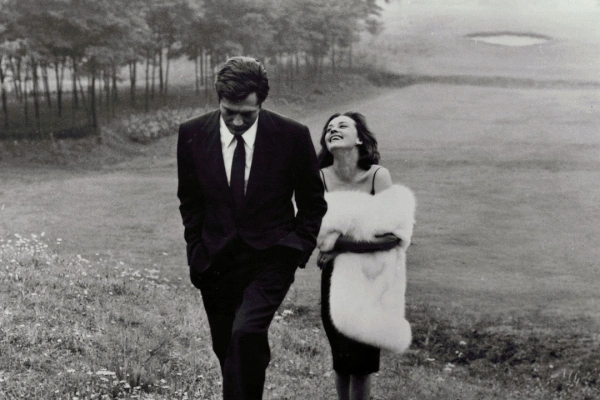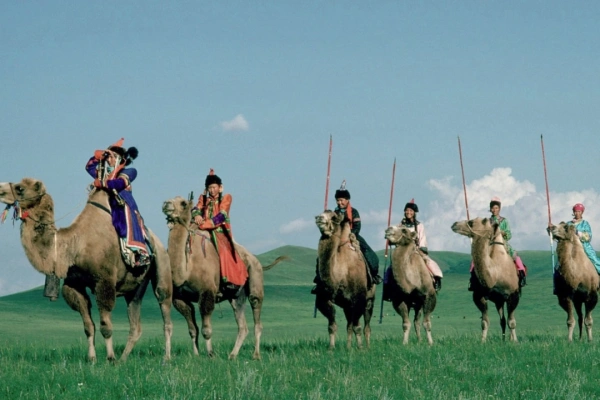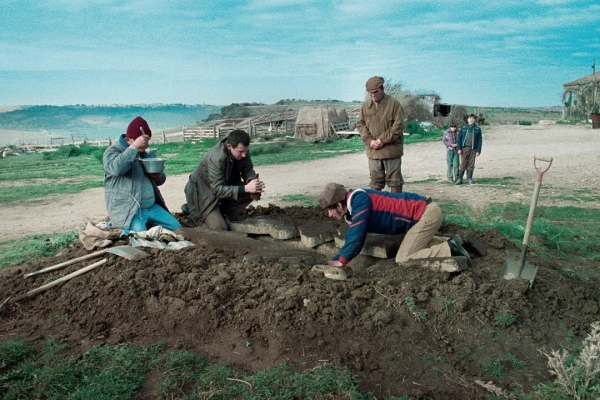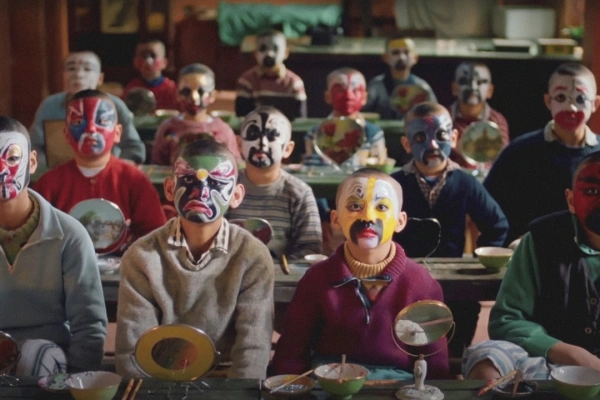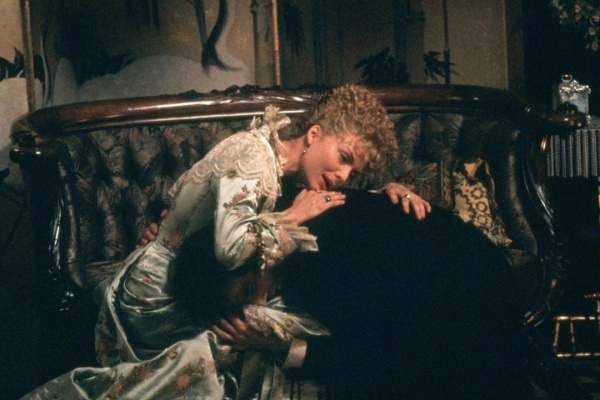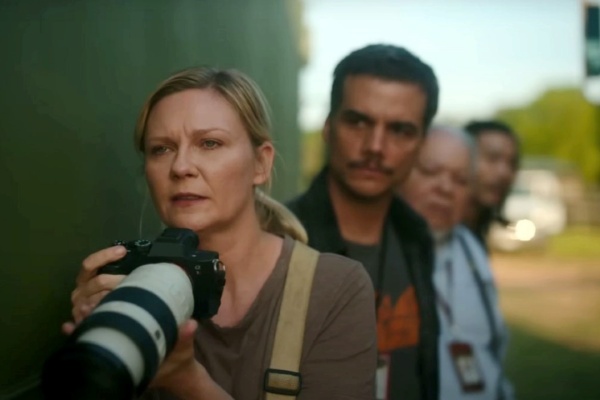A well-executed omnibus work showcasing five diverse shorts featuring five different dialects, made with the unique sensibilities of their creators.
Dir. Liao Jiekai, Kirsten Tan, He Shuming, Chong Junfeng & Eva Tang
2017 | Singapore | Anthology | 75 mins | Various Chinese dialects
NC16 (passed clean) for some sexual scenes
Cast: Various
Plot: Featuring short stories of the reflections, interpretations and perspectives of five Singaporean filmmakers as they go on a journey in search of their cultural roots and how they make Singapore home.
Awards: –
Source: Singapore Chinese Cultural Centre
Accessibility Index
Subject Matter: Moderate
Narrative Style: Straightforward
Pace: Varying
Audience Type: Slightly Mainstream

(Reviewed at Singapore Chinese Cultural Centre – first published 14 Jun 2017)
Spoilers: No
It has been two years since 7 Letters (2015), an anthology of seven shorts commemorating Singapore’s 50th year as an independent, sovereign nation. This year, the omnibus bug continues in the form of 667, a series of five shorts executive-produced by Royston Tan (also the key driver of 7 Letters), and commissioned by the newly-opened Singapore Chinese Cultural Centre.
This is the closest the Singapore film community has come to deliver a feature-length film almost entirely in dialect, very much a frustrating issue as long as the unhealthy state policy of limiting dialect on television and film exists to ruin the very languages we seek to protect.
667’s focus, however, is to champion these beautiful languages through soft power, and in the process, to affirm and forge old and new identities respectively, through a fascinating match-making of filmmaker and dialect.
In the interest of brevity, here are my short, honest thoughts on each of the five shorts:
“Nocturne” by Liao Jiekai
Language: Hokkien
Liao Jiekai shows us why he is one of our most introspective filmmakers with “Nocturne”, a deceptively simple meditation on time, memory, history and the medium itself. The spectre of our nation’s drive to get rid of alleged communists decades ago haunts this meta-film about a group of actors rehearsing for a film dramatising that very episode. This somehow reminds me of Hou Hsiao-Hsien’s layered masterpiece, Good Men, Good Women (1995), which I’m sure was a film of considerable influence on “Nocturne”.
There’s a Zen-like quality to Jiekai’s work, a style marked by action in stillness that just manages to make his film’s meta-spatial elements operate temporally, best exemplified by its most important and affecting scene: that of a man playing a traditional Chinese flute in front of the camera, as directed contemporaneously on the TV Logic monitor by our very own Boo Junfeng (Apprentice, 2016), and as evoked by its sorrowful tune—the tumult of history reaching across time to us, while we reach out in futility for closure. “Nocturne” doesn’t always engage, but it dares to meld ideas together to evoke something within. [B+]
“Wu Song Slays the Seductress” by Kirsten Tan
Language: Teochew
With such a title, one would expect a Tarantino-style film, full of verbal and visual vigour. Well, you get what you desire—there’s visual homage to Kill Bill: Vol. 1 (2003), intentional or otherwise—in this very entertaining work by the ever-surprising Kirsten Tan, minus the coarse language and extreme violence of course. It announces its wake-me-up intent from the get-go (perhaps this should have been the middle segment of the anthology), and never halts until the very end.
Its vibrant energy is contagious, a result of its astute pacing, and refreshing experimentation with hybridized images and sounds—of superimpositions of Chinese opera performances with internet art, of mixing traditional opera music with electronic techno-beats. I think it is fair to say that the appeal of “Wu Song Slays the Seductress” largely lies in its multi-sensory experience.
But it is Kirsten’s ability to find that tiny, near-perfect spot between sensationalism and exhibitionism that is most admirable. It’s hard to detect miscalculated artifice, even if excess is the raison d’être of this piece; likewise, there are no tonal inconsistencies, even if the forced copulation of the traditional and the modern brings about dissonance. [A-]
“Letters from the Motherland” by He Shuming
Language: Hainanese
The only documentary short of the quintet is also its most personal work. Director He Shuming strives for a lyrical quality through the Hainanese language, a dialect that I used to hear only during Chinese New Year. Since young, it had struck me as a gentle language with melodious tonal inflections, at times un-graspable to the Teochew ears of mine.
In “Letters from the Motherland”, a narrator reads the letters that have traversed between the village of Qionghai, Hainan, and the cityscape of Singapore. Penned by the filmmaker’s father and a caretaker of his ancestral home over decades, these letters reveal heartfelt emotions through descriptions of life in either lands, and the passing of time.
With the constant back and forth, Shuming’s short takes a while to get into, but becomes more engaging as it moves along. By accompanying present footage shot on location in Hainan with the diary-style narration, “Letters from the Motherland” asks of us to make mental images—largely forgotten as they are—of the past, because once our memories fade, we are no more than dust in the wind. [B+]
“Ke” by Chong Junfeng
Language: Hakka
Chong Junfeng was my Perspectives Film Festival’s head programmer in 2015, and his first professional short couldn’t have been more different from his final-year undergraduate film “Aiden”, a saccharine drama about a young boy and an old shadow puppeteer that is infused with magical realism.
In “Ke” (its Chinese title a shorthand for the Hakkas), Junfeng puts his two feet firmly into melodrama, centering on a middle-aged woman from overseas who comes to visit her grandpa’s grave, but is unable to find the tombstone.
Dealing with themes of filial piety and a close-knit identification with one’s roots, while also a slight commentary about Singapore’s penchant for exhuming and relocating graves in pursuit of progress, “Ke” features an excellent performance by its lead actress who thrives in close-ups, but the film is let down by one unnecessary grab for attention during its midpoint—an excessive moment that sees the woman becoming way too hysterical when a stranger doesn’t help her.
I strongly believe a re-cut of this scene with added restrain will benefit the film greatly. Nevertheless, I’m proud of Junfeng, who clearly shows he has a flair for crisply-shot visuals. [B]
“The Veiled Willow” by Eva Tang
Language: Cantonese
My impression of Eva Tang is that she is a very conscientious filmmaker, who absorbs influences from different places, especially the richness of Chinese cinema. Opening with a short kitchen scene that momentarily recalls that of Lee Ang’s Eat Drink Man Woman (1994), and using Chinese title cards that are reminiscent of Hou’s A City of Sadness (1989), “The Veiled Willow” is very much the synthesis of Eva’s reverence for the medium and her illuminating sense of discovery.
A film about a ma jie (domestic servants who have taken a vow never to marry) who serves an older, wealthy woman of two grandkids, “The Veiled Willow” focuses on their regrets, desires and resignations to the fate of an unfulfilled existence. Food and children are the two motifs, and they combine to hilarious effect when one of the child’s names is mispronounced by her grandma. However, happiness is often temporary for the two women as they operate in their bubble of melancholy.
In the film’s finest sequence featuring a montage of the ma jie preparing to be initiated in a vow-taking ceremony, Eva’s use of music is exquisite. The rhythm is graceful, yet the melody has a subtle dissonant quality, suggesting the tension between courage and regret, feelings that must be confronted but stoically kept within. This is a remarkable work by a filmmaker that I admire greatly. [A-]
Grade: B+
Trailer:

